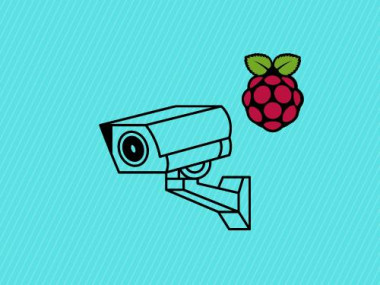How To Stream Video From Raspberry Pi Camera To Computer
About the project
Learn how to set up a Flask App on your Raspberry Pi and create a live video feed that you can access on your local network.
Project info
Difficulty: Easy
Platforms: Raspberry Pi
Estimated time: 1 hour
License: GNU Lesser General Public License version 3 or later (LGPL3+)
Items used in this project
Story
Learn how to set up a Flask App on your Raspberry Pi and create a live video feed that you can access on your local network, creating a real-time security camera. You will be able to view the video stream over the internet on your local network by the end of this video! All you will need is a Raspberry Pi (I used a 4b), a camera, and a power supply.
Before reading the remainder, be sure to subscribe and support the channel if you have not!
Subscribe:
Support:
https://www.buymeacoffee.com/mmshilleh
Hire me at UpWork to build your IoT projects:
https://www.upwork.com/freelancers/~017060e77e9d8a1157
1-) Download Packages on Raspberry PiIn this section, we'll prepare your Raspberry Pi for camera streaming by installing necessary packages, enabling the camera, and configuring network settings. Follow these steps in the terminal of your Raspberry Pi:
Update Package ListsFirst, ensure your package lists are up-to-date to avoid any compatibility issues during installation. Run the following command:
sudo apt updateNext, we need to enable the camera interface on your Raspberry Pi. This can be done through the Raspberry Pi configuration tool. Enter the following command:
sudo raspi-configNavigate to the Interface Options, select Camera, and choose <Yes> to enable it. Once this is done, you'll have to restart your Raspberry Pi for the changes to take effect.
With the camera enabled, we'll now install Flask, a micro web framework for Python, and PiCamera, the Python library for Raspberry Pi camera module. You can use pip (Python's package installer) for this. If you're using Python 3 (recommended), you can install these packages with the following command:
pip3 install flask picameraIf you don’t have pip3 installed, you can install it first by running:
sudo apt install python3-pipLastly, you'll need the IP address of your Raspberry Pi to access the camera stream from other devices on your local network. Retrieve the IP address by running:
ifconfigNote down the IP address displayed under the wlan0 section (for wireless connection) or eth0 section (for wired connection). You'll use this IP address to connect to your Raspberry Pi camera stream from your local network.
Now that you have the setup, create a python script and name it whatever you like on your local computer, run the following code:
import io
import picamera
from flask import Flask, Response
app = Flask(__name__)
def generate_frames():
with picamera.PiCamera() as camera:
camera.resolution = (640, 480)
camera.framerate = 24
stream = io.BytesIO()
for _ in camera.capture_continuous(stream, 'jpeg', use_video_port=True):
stream.seek(0)
yield b'--framernContent-Type: image/jpegrnrn' + stream.read() + b'rn'
stream.seek(0)
stream.truncate()
@app.route('/video_feed')
def video_feed():
return Response(generate_frames(), mimetype='multipart/x-mixed-replace; boundary=frame')
if __name__ == '__main__':
app.run(host='0.0.0.0', port=5000, threaded=True)This script is designed to set up a simple web server that streams live video from a camera connected to a Raspberry Pi. Here's a breakdown of its components and what each part does:
Imports:
ioandpicameraare used to interact with the Raspberry Pi's camera module.Flaskis a micro web framework in Python, used here to handle web server operations.
Flask App Initialization:
app = Flask(__name__)initializes the Flask application.
Frame Generation Function (generate_frames):
- This function interacts with the PiCamera to capture video frames.
camera.resolutionandcamera.framerateare set to define the quality and frame rate of the video.- It captures frames continuously in a loop using
camera.capture_continuous. - Each frame is converted to a JPEG image and formatted as a multipart message (a standard way to transmit binary data over HTTP). This allows each frame to be sent over the internet immediately after it's captured.
Web Server Route (/video_feed):
- The
@app.route('/video_feed')decorator tells Flask that any HTTP request to the '/video_feed' URL should be handled by thevideo_feedfunction. - The
video_feedfunction returns a streaming response generated bygenerate_frames. Themimetypeparameter tells the browser how to interpret the data it's receiving.
Main Block:
- The
if __name__ == '__main__':block ensures that the web server is started only if this script is executed as the main program. app.run(host='0.0.0.0', port=5000, threaded=True)starts the Flask application. It listens on all public IPs (0.0.0.0) at port5000and handles requests in a separate thread for each incoming request, allowing multiple clients to view the stream simultaneously.
When you run this script on your Raspberry Pi, it starts a web server. You can view the live video stream by navigating to http://<your-pi's-IP-address>:5000/video_feed in a web browser. The video is streamed in real-time, so this could be used for monitoring, video conferencing, or just sharing what your camera sees with others over the web.
Hope you enjoyed the tutorial! If you did, be sure to subscribe to the YouTube channel in the video above. Let me know if you have any questions. I will see you in Part 2 where we go over how to create a video stream you can view from anywhere, beyond your local network, so stay tuned.
Credits

mahmood-m-shilleh
Mechanical and Software Engineering Background. University at Buffalo 2019 Texas A&M 2021 I make data pipelines for my day job. Outside of work, I participate in online communities regarding Full Stack Engineering, Microelectronics, and more. You can find more details about me on my Youtube Channel. https://www.youtube.com/@mmshilleh Feel free to reach out!


















Leave your feedback...